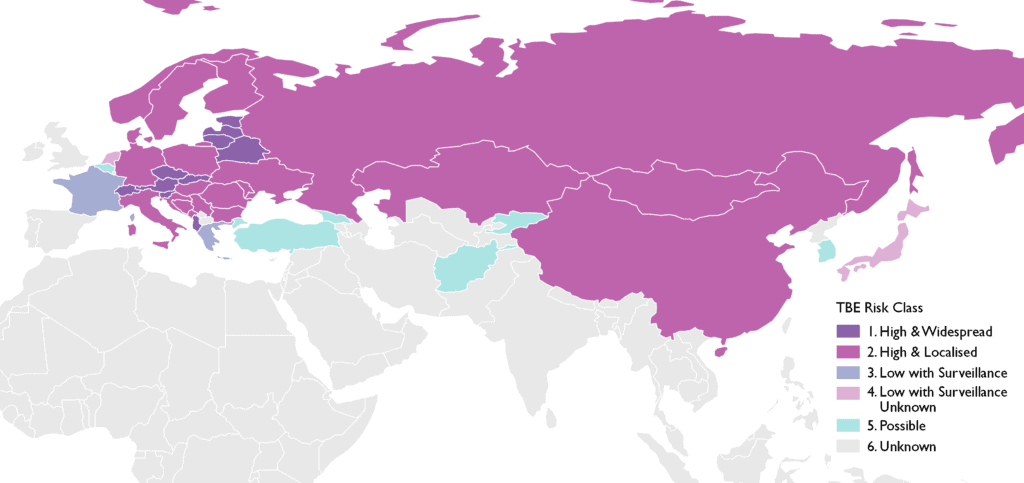
Tick-borne encephalitis virus (TBEV) has been found in the UK for the first time. The virus has been discovered as part of ongoing research by Public Health England and the Emerging and Zoonotic Infections National Institute for Health Research (NIHR) Health Protection Research Unit at the University of Liverpool.
Experts described the risk of infection as “very low,” but called on members of the public to be aware of ticks, small parasitic arachnids that are related to spiders and mites.

Tick-borne encephalitis (TBE) virus is an infection that causes no symptoms in most people. However, within one or two weeks of being bitten, some may complain of flu-like symptoms such as headaches, fever, fatigue and joint pain. In approximately one in ten cases, encephalitis or meningitis may follow, leading to severe headaches, light sensitivity, and dizziness, as well as problems with concentration, speech and walking. In rare cases, the virus can cause paralysis in the arms and legs and even death.

The infection is endemic in Scandinavia, mainland Europe, and parts of China and Japan. Ticks live in forests and grassy areas. It has now been detected in Thetford Forest, in eastern England, and the border between the southern counties of Hampshire and Dorset.

Earlier this year a European visitor became ill after being bitten by a tick in the New Forest area. This is a highly probable case of TBE. The patient, who was reported to PHE through the European Early Warning and Response System has since made a full recovery. No further cases in the UK have been identified. In 2017, there were 3,079 reported cases of TBE in Europe, including 9 associated fatalities.
The number of infections is increasing in Europe due to climate change and an increase in outdoor leisure pursuits, according to PHE. It is also possible that migratory birds introduced TBE-infected ticks to the UK, or they could have arrived along with pets traveling from endemic countries in Europe to the UK, according to PHE.
“Ticks carry a number of infections including Lyme disease, so we are reminding people to be ‘tick aware’ and take tick precautions, particularly when visiting or working in areas with long grass such as woodlands, moorlands and parks,” said Nick Phin of PHE.
Ticks are most active from May to October, although in some parts of Europe tick season could start as early as February if temperatures rise above 8 degrees Celsius.
Experts recommend a TBE vaccine if you’re visiting a country where the infection is common and you’re planning to do outdoor activities when you get there. Two injections of the vaccine can protect you for about a year. A third injection can protect you for about 3 years. The first injection should be given at least 1 month before traveling.
Lyme disease remains a far more prevalent tick-borne health risk and health officials recommend that hikers walk on clearly defined paths and avoid brushing against vegetation where ticks may be present. Avoiding deep vegetation and sticking to paths will reduce the risk of tick bites, as will covering your skin and using insect repellants.
In 2018, a US congressional advisory committee said tick-related illnesses had become “a serious and growing threat to public health” and in July the US House of Representatives ordered an investigation into whether the Department of Defense had experimented with ticks and other insects as biological weapons.






